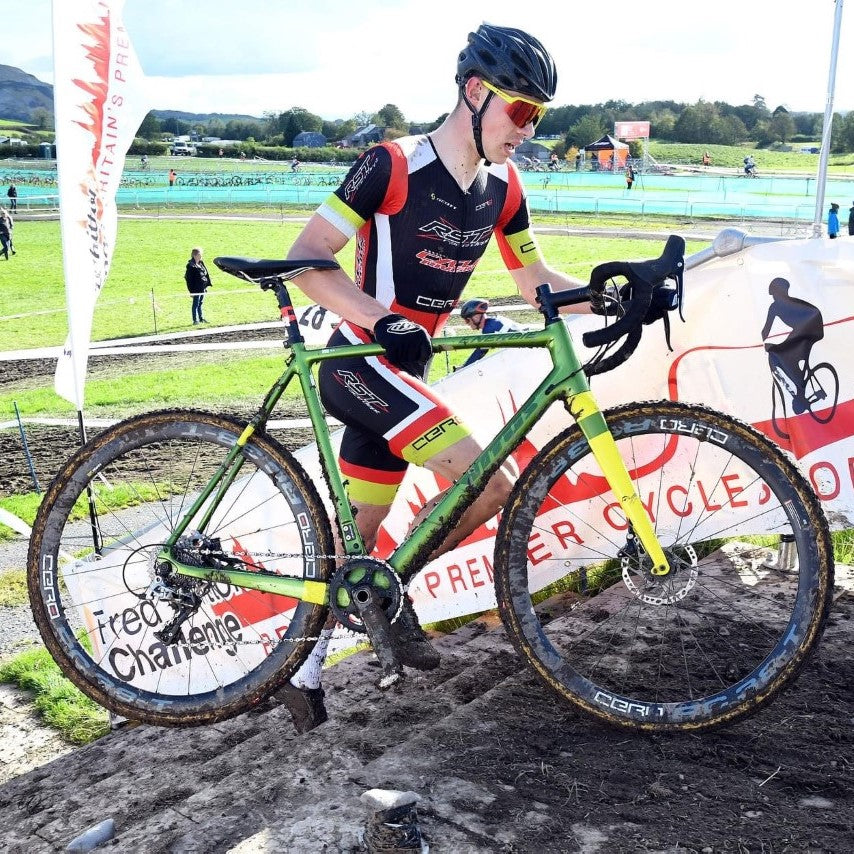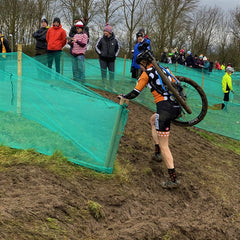
What to expect for your first Cyclocross race?
Share

The golden words ‘cross is coming’ – a phrase that sends a shiver down the back of every cyclocross rider. The anticipation, the thrill, the fear, the excitement. It’s a little reminder that, unlike many bike riders, the season of training is now over and the season of racing is about to begin. It’s a little reminder that it’s time to check over the old cross bike and give it a final spruce up ready for race day. For the hardened cyclocross rider both of these will long ago have been put into action – new parts of the bike will have been ordered and fitted, tyres will have been checked over and most likely replaced, tubs will have been glued onto rims for all weathers (file treads, intermediates and full on muds), and racers will be keenly eyeing up all early season opportunities to actually get to ride the file treads in earnest. Other racers will be rueing their lack of preparation and will be working into the night as they haul their bike out of the garage and crank it back into action, wishing they had practiced their running, remounts and hurdles.
Whatever type of rider you are, it’s CrossmasEve and it’s time to go racing.
For some of you however, it’ll be your first ever go at cyclocross and you’ll be nervously wondering what to expect. So here are some top tips and pointers for what cyclocross racing is all about.
What makes a race into a cyclocross race?

A cyclocross race consists of laps around an off-road circuit that is approximately 2-4km long, for a race lasting between 40 and 60 minutes depending on the race category.
A cyclocross race is characterised by being off-road, using grass and woodland and including a variety of surfaces such as tarmac, cobbles, sand, gravel, loam, grass and mud. There may be a small amount of single track as well as wider sections, lots of cornering, steep banks, stairs, and, crucially, hurdles (sometimes known as barriers) to force a dismount or bunny hop. It is normal to have an ‘unrideable’ feature in a course such as a steep bank which will force you to dismount and run; and that is the beauty of cyclocross - deciding when it is quicker to run and when it is quicker to ride. This is great for the less technical rider since there is no shame in hopping off and running – that’s what cyclocross riders have to do!

Cyclocross is ridden on a specifically designed bike which enables riding in muddy conditions. This essentially looks like a road bike with knobbly tyres, but actually has a shorter geometry for cornering, a higher bottom bracket, wider tyres and more space around the wheels and brakes.

Typically, a cyclocross race gets really muddy and the bikes begin to clog up; you are allowed more than one bike for this reason. There is a pit area where you can access a spare bike if you have one, and where your pit crew may clean your other bike for you whilst you race. You can exchange your bikes in the pits whenever you wish since you will pass the pits twice per lap. However, many people only race on one bike, and early in the season the ground is hard and dry, so there is no need for two bikes - don’t be deterred at this stage!
What you’ll need for your first cyclocross race:
- Off-road bike
- Helmet
- Safety pins
- Water/drink for before and after your race
- Food
- A change of clothes, including some warmer layers/outdoor coat
- Towel if it’s wet and muddy
- British Cycling provisional race licence (or a day licence bought on the day)
You need 1 off-road bike, ideally a cyclocross bike but a mountain bike is allowable at local level, and you possibly won’t be the only one on a mountain bike. A road bike is an absolute no-no because you need the grip from wider, knobbly off-road tyres and later in the season you’ll need space for mud clearance around the wheels and brakes. A gravel bike will do the job but is designed more for straight gravel paths and not for tight corners at speed.
What happens on race day?
Many races are now pre-entry online only through the British Cycling website and you cannot enter on the day of the race, so check out the entry details for your particular race.
Check the race day schedule for the timing and duration of your race and your course practice. There are many different races during the day at a cyclocross event and there are clear expectations for when you can access the course and when you can’t. It is quite likely that there will be a general course practice early in the day where you can do a sighting lap and possibly revisit tricky sections and learn how to ride them. You may also get another course practice immediately before your race which can form part of your warm up, or you could warm up on a turbo or rollers if you have them.
Find out what time you need to sign on for your race. As part of the latest Covid guidelines, this part of the process is new and it is likely that there will be a specific time for you to sign on (so the race officials know you are actually racing on the day). At sign on you will be given your race number to pin onto your jersey, probably one for your back positioned at the bottom of the jersey and one for your arm positioned forwards. You may also be given a timing chip to wear on your left ankle.

A summary schedule of the day:
- Sign on (whenever your sign on slot opens)
- Do a practice lap
- Eat and drink
- Put on your race kit
- Pin on your numbers
- Warm up
- Get to the start 15 minutes early
- Race!
- Return your timing chip
Top tips:
Check your tyre pressures. Cyclocross is typically ridden with very low pressures to give more grip, somewhere between 18-25 psi depending on your weight and the conditions.
You do not have to have more than one bike.
You are not allowed a bottle pass up, even in the pits.
Riders often get lapped, just keep going, it doesn’t matter.
As riders start to get lapped it can be quite difficult to spot who the lead rider is unless you know the field well and keep concentrating. The beauty of this is that there is no fear of getting ‘dropped’ from a peloton because the riders string out.
There is a bell which signals the last lap.
All riders will finish the race when they reach the chequered flag, regardless of the number of laps they have completed.
There’s an art to jumping on and off your bike at speed and cyclocross riders make it look easy!
Riders of all abilities race cyclocross, anyone can have a go!
There are races for every age of rider, including tiny children on balance bikes, teenagers and even oldies!
